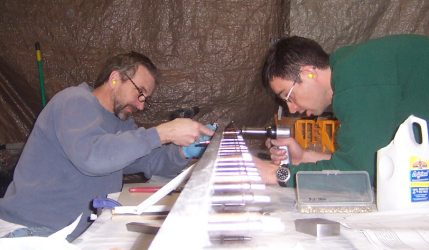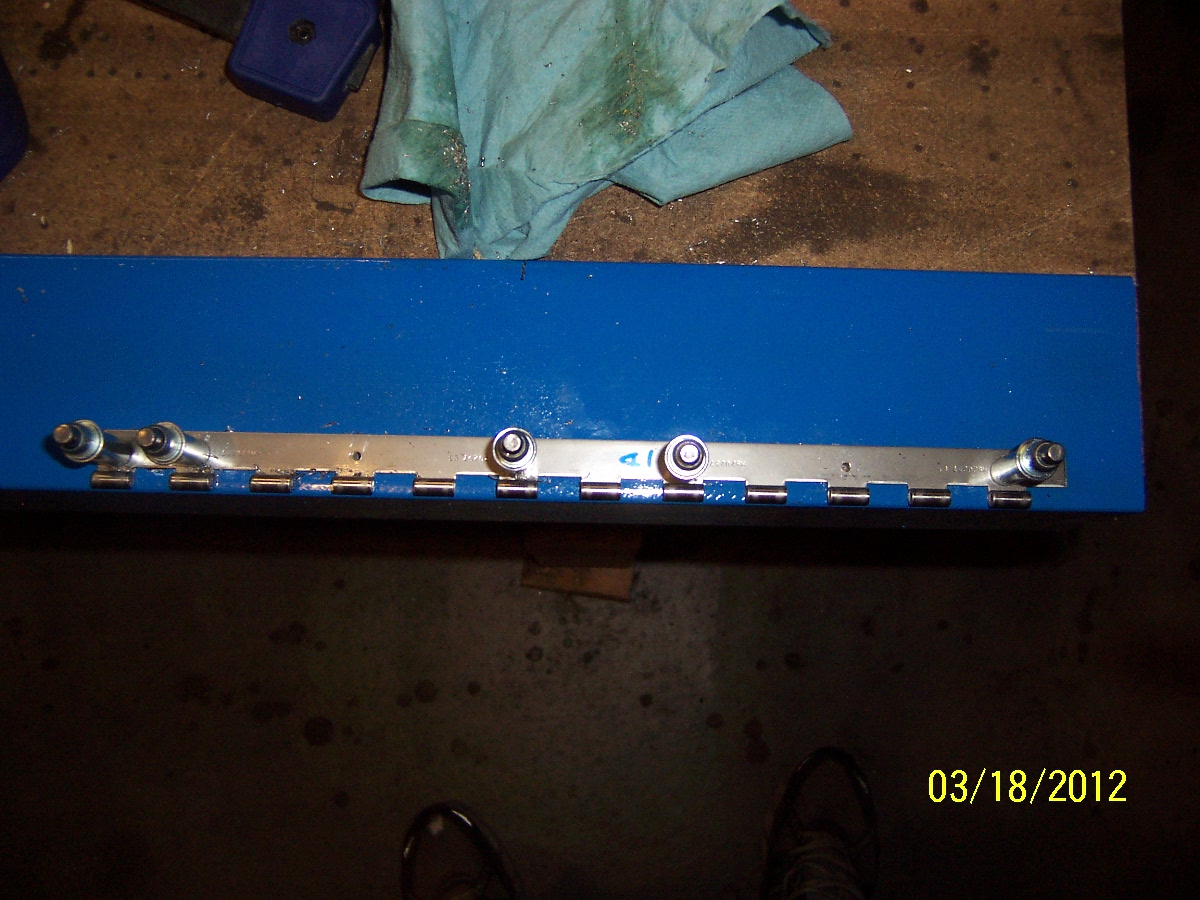Here are some pictures of finishing the rear spar bends. As usual the first time you try something new, like these really long bends, it takes a while and you learn the little subtleties. For example we noticed that the ends of the bend would form much more than the center, slightly bowed, perhaps the center of the brake is bending a little. Since we have to go past 90 degrees we have to bend it a second time since the brake can only rotate 90 degrees before it binds. We have to bolt another flange (or a peice of wood) onto the brake. Well if we don’t push at the ends for this second bend it all seems to average out.
Here we can see that we got the first flange angle but it looks pretty wavy along the length
When you bend the flange on the other side it all straightens out:
That looks awesome!!
Here are the two completed rear spars. These are the long lengths (108 7/8″) so we don’t need the splice plate (snx w12-04).
During this process you can see we were using lots of C-Clamps. Here’s what happens when Dan wants something tight:


![03272012387[1]](http://sonex1362.com/wp-content/uploads/2012/04/032720123871.jpg?w=300)























